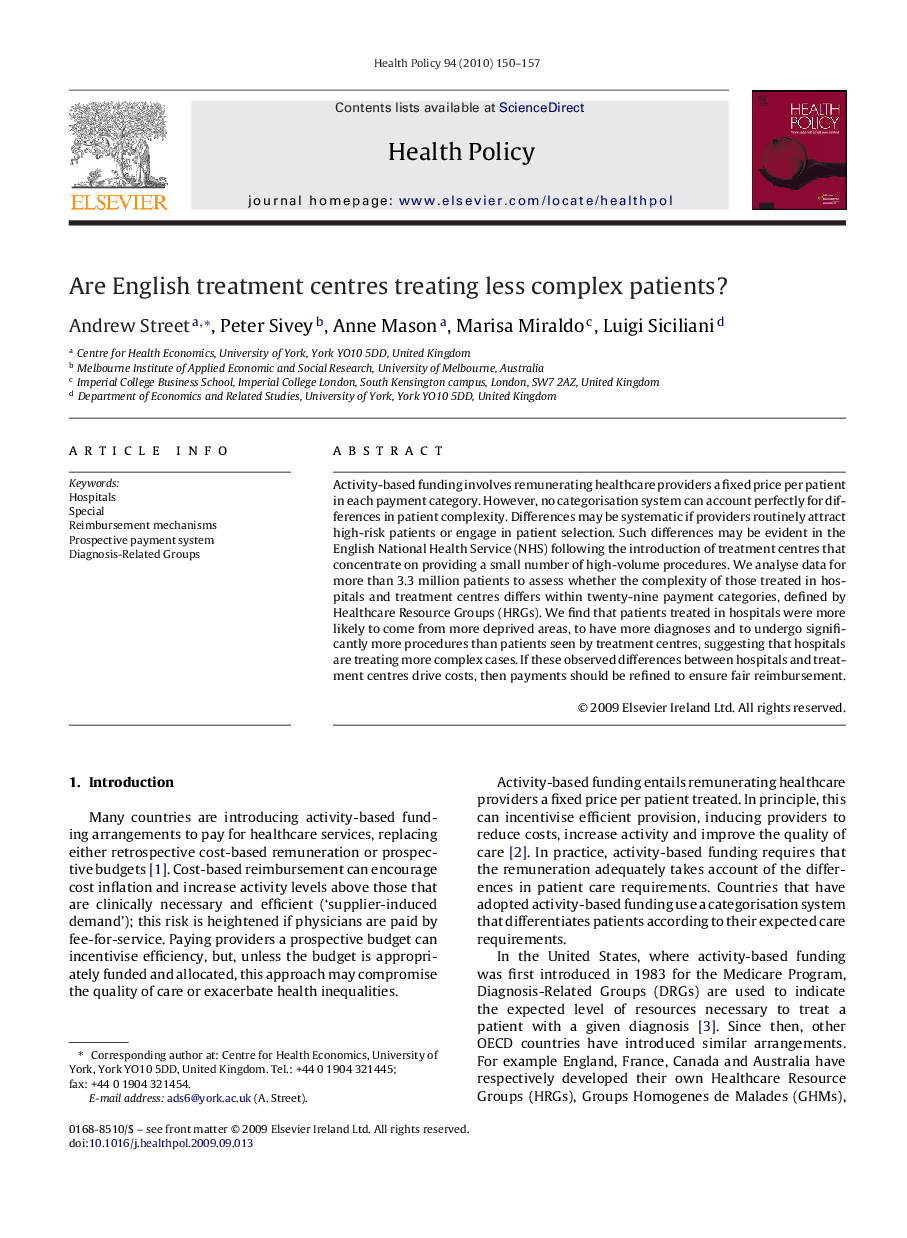| Article ID | Journal | Published Year | Pages | File Type |
|---|---|---|---|---|
| 4198455 | Health Policy | 2010 | 8 Pages |
Activity-based funding involves remunerating healthcare providers a fixed price per patient in each payment category. However, no categorisation system can account perfectly for differences in patient complexity. Differences may be systematic if providers routinely attract high-risk patients or engage in patient selection. Such differences may be evident in the English National Health Service (NHS) following the introduction of treatment centres that concentrate on providing a small number of high-volume procedures. We analyse data for more than 3.3 million patients to assess whether the complexity of those treated in hospitals and treatment centres differs within twenty-nine payment categories, defined by Healthcare Resource Groups (HRGs). We find that patients treated in hospitals were more likely to come from more deprived areas, to have more diagnoses and to undergo significantly more procedures than patients seen by treatment centres, suggesting that hospitals are treating more complex cases. If these observed differences between hospitals and treatment centres drive costs, then payments should be refined to ensure fair reimbursement.
